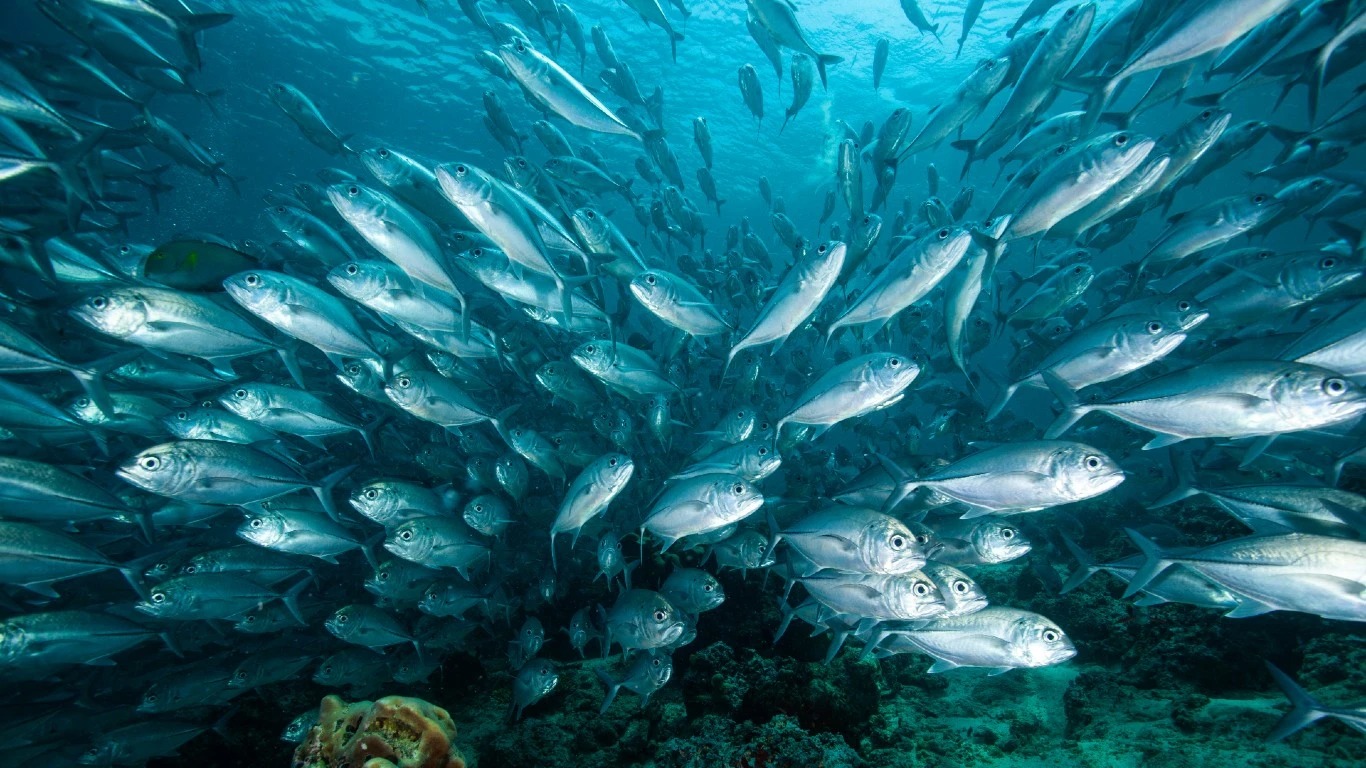
I’m traveling to Japan next week for the first time since the Fukushima earthquake, tsunami and nuclear disaster 12 years ago. I’m particularly focused on the protests, seafood bans, and nuclear controversy surrounding Prime Minister Fumio Kishida’s plan to begin releasing treated, radioactive wastewater back into the sea today.
While the Japanese government has taken every precaution in detailing how its plan is safe to surrounding waters and sea life, including comparing the waste levels to those of similar releases in nearby China, the memories of the disaster and the subsequent distaste for anything nuclear are still strong in the region and elsewhere.
It’s important to remember what a big deal the disaster in March 2011 was to Japan and the global nuclear community. The earthquake and tsunami waves caused three of the Fukushima plant’s nuclear reactors to suffer core failures and release radioactive material into the sea and air, causing the government to evacuate more than 100,000 people from a danger zone some 20 miles wide. It was the biggest nuclear disaster since Chernobyl and caused several countries, especially Germany, to turn their backs on nuclear power for good.
A decade later nuclear power is on the rebound. It’s recognized by most in renewable energy as a safer, and highly productive way to produce energy without dangerous carbon emissions. More countries, such as France, are touting nuclear as the only way forward. Investors such as Bill Gates are promoting micro generators that can be moved around to create energy in places of need. And yet, as this week’s headlines clearly show, criticism of the power is still substantial.
In the end, our need to immediately generate more energy to solve shortages and transition away from oil and gas, and the geopolitics that go with it, mean nuclear power is destined to become a more common energy source worldwide. There will still be scares, as we saw in Ukraine last year when Russia bombed a plant. But the benefits will ultimately outweigh them.
Investors in these new products should heed the reaction to the Fukushima release, however, including the resulting economic impact of bans on Japanese seafood that are being announced. Just like nuclear waste itself, the controversy isn’t going away anytime soon.
The ‘S’ in ESG is becoming increasingly controversial for Latin American companies
. . . . While the environmental, or ‘E’ in ESG strategies, component is difficult enough for companies and investors to agree on, the S, or social pillar, is becoming the most controversial, especially in Latin America, writes Michael Molinski. The use of forced labor by many companies operating in parts of Latin America, particularly child labor, has drawn the ire of European and U.S. regulators eager to push countries to halt deforestation in the Amazon. Legal experts warn that sanctions similar to those used against China for forced labor, are being increasingly discussed, which could set Latin America back years in its effort to modernize its economies. . . .
Thursday’s subscriber insights
Shareholder climate proposals aren’t what they used to be, BlackRock says
. . . . BlackRock’s backtrack on all things ESG this year came with some interesting data this week, as the world’s largest asset manager reported that it only supported 7% of shareholder proposals tied to climate change or social issues. The company $BLK said it backed only 26 of 399 proposals. By comparison, last year it said it backed 22%.
But rather than just admit it has retreated on its climate change leadership in the face of political opposition and plenty of ESG confusion, BlackRock claimed that many of the proposals were either too narrow, too demanding of micro changes, or even redundant with what some managements had already accomplished, such as carbon emissions disclosures.
Shareholder proposals in general rose to record levels this year, according to proxy firm ISS, with ESG proposals almost doubling over 2022. So there could be some merit in the claims that more proposals of lesser quality are finding their way into proxy materials.
The claims will lead to greater scrutiny of proposals next spring, though, especially after the Securities and Exchange Commission releases its new disclosure mandate rules this fall. More to come on this one. . . .
Salesforce, Jet Blue, Qantas launch sustainable aviation challenge
. . . . A group of investors including Salesforce, Breakthrough Energy and airlines JetBlue and Qantas launched a sustainable aviation challenge today for entrepreneurs to devise new ways to decarbonize air travel, including new types of aviation fuel. Would-be tech innovators are encouraged to submit ideas between now and Oct. 2, and the winning list will be announced later this year. (Link here: https://www.salesforce.com/
While aviation only accounts for about 2.5% of harmful carbon emissions to the atmosphere, its high-profile nature and often elite clientele makes it a magnet for criticism for environmental activists. Most major airlines are working on ways to develop sustainable fuel and practices to help decarbonize air travel. Now these investors are expanding the call for ideas. . . .
New health hazard detected in wildfire smoke
. . . . If the health effects of wildfire smoke — shortness of breath, bronchial problems, etc., etc. — weren’t already bad enough, now comes news that it may cause dementia. A new study shows that toxic materials in the smoke, such as the smoke that covered NYC earlier this year and much of Canada right now, can lead to more cases of dementia.
And this study was conducted before the fires that we’ve seen this summer. While we know that wildfire emissions reverse any steps we take to decarbonize by the incredible amount of black smoke they put in the atmosphere, this new development makes the development of air cleaners and facial filters all the more timely. Read more here. . . .
Methane-eating bacteria proposed to reduce harmful emissions
. . . . Methane pollution produces huge global warming effects. It is more than 85 times more harmful than standard carbon dioxide emissions. Now scientists believe they may have come up with a solution: bacteria that eat it and turn it into less noxious elements.
Scientists at Cal State Long Beach and the University of Washington say a certain group of bacteria known as methanotrophs can effectively remove methane from the air and even turn it into a form of sustainable protein. The current problem, for the scientists and any entrepreneurs seeking to make a product out of it, is how to scale it to the size needed to have an impact on the 570 million tons estimated to be released into the atmosphere each year. Read more here. . . .
Editor’s picks: Essential energy efficiency; plus, active Atlantic storms
The world is baking in extreme heat – causing demand for air conditioners & the electricity used to power them to surge
This commentary explores why stronger action on energy efficiency is crucial to keep people cool without warming the planet further: https://t.co/C4SMVVDZTk pic.twitter.com/uD9Na2qZGz
— International Energy Agency (@IEA) August 23, 2023
Energy efficiency is crucial to survival
The recent extreme heat has major consequences for global energy systems, The International Energy Agency says. Record-shattering temperatures are feeding demand for air conditioning and driving surges in demand for electricity, which can result in a vicious cycle of increased greenhouse gas emissions that in turn make the world even hotter. The IEA says there are solutions to mitigate both higher energy usage and consumer costs, from stronger standards for air conditioning units to new incentive programmes from grid operators. As policy makers race to make the world’s energy systems more sustainable, they must consider the consequences of rising cooling demand — and seize the opportunity to invest more in energy efficiency at this critical time, the agency says.
Hilary, Emily, Franklin, Gert, and Harold
“It’s not often that a tropical storm from the Eastern Pacific moves through Southern California on the same weekend that three tropical storms erupt in the Atlantic.” That’s where things stood on Sunday, notes Yale Climate Connections. According to the report, only twice before in Atlantic records going back to 1851 have three tropical cyclones developed within 24 hours, as was the case on Sunday with Emily, Franklin, and Tropical Depression 6, which became Gert by late Sunday evening. By late Wednesday, Harold, who popped up early Tuesday as a tropical storm, was a post-tropical cyclone inland over northern Mexico, while Franklin was a tropical storm soaking the Dominican Republic. Check out the National Hurricane Center’s Tropical Weather Outlook for the Atlantic to keep up.
Explain that: thermal refuge
. . . . Thermal refuge. We might think of it as a cool shady spot on a hot summer day. But for animals — especially coldwater fish, a thermal refuge is a lifesaving break from hot water. The Environmental Protection Agency describes a thermal refuge as an area buffered from regional climate effects at a range of spatial and temporal scales. “These features can be critical to coldwater fish at certain times when rivers would otherwise be too warm for survival.” The EPA notes that many rivers and streams in the Pacific Northwest are currently listed as impaired under the Clean Water Act as a result of high summer water temperatures. “Much effort is being expended to improve conditions for salmon and steelhead, with increasing emphasis on preparing for future climate change.” One climate change adaptation strategy that is gaining increased attention is the potential for thermal refuges. And it’s not just rivers and streams that have the potential to be refuges. Recent research shows that the ocean off California’s Central Coast may be a thermal refuge for marine wildlife. Scientists say that without a cooler water refuge, species like the Dungeness crab would no longer be able to exist along the California coast. . . .
Words to live by . . . .
“Climate change is sometimes misunderstood as being about changes in the weather. In reality, it is about changes in our very way of life.” — Paul Polman.





